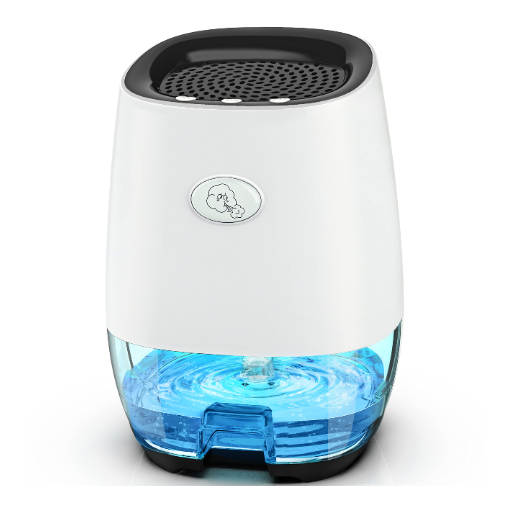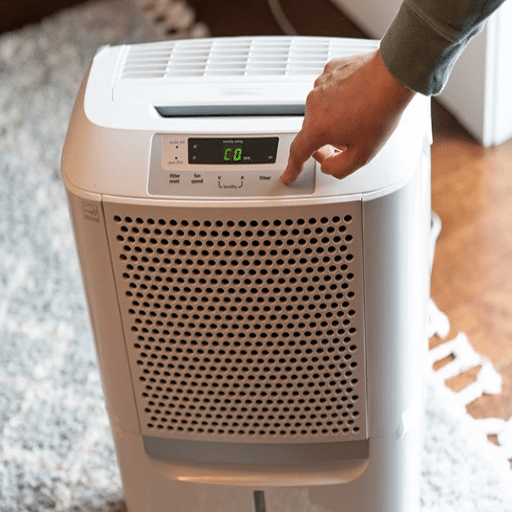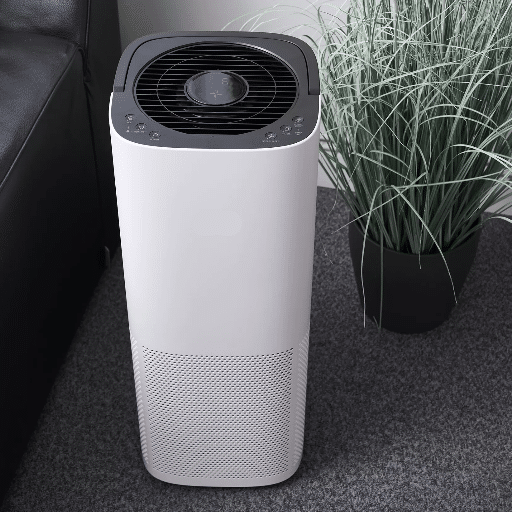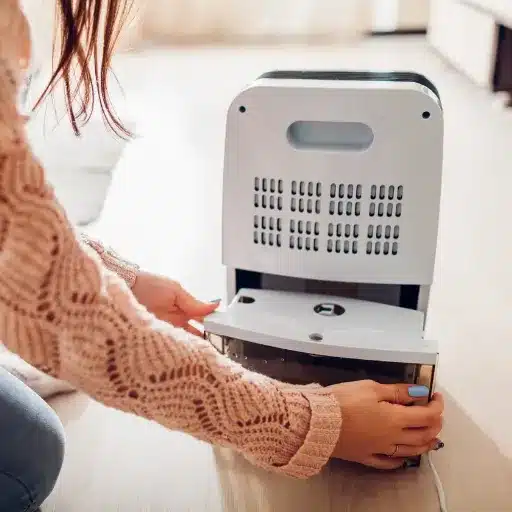Moisture and humidity can wreak havoc in a bathroom, causing issues like mold, mildew, and unpleasant odors that not only affect your home’s cleanliness but can also pose health risks. This is where small, efficient dehumidifiers come into play—compact devices designed to tackle excess moisture in confined spaces like bathrooms. But with so many options available, finding the right dehumidifier to suit your needs can feel overwhelming. This guide explores the best small dehumidifiers specifically tailored for bathroom use, breaking down their key features, benefits, and how they can transform your bathroom into a fresher, healthier space. Whether you’re struggling with persistent dampness or simply looking to enhance air quality, this article has you covered.
What is a Bathroom Dehumidifier and Why Do You Need One?
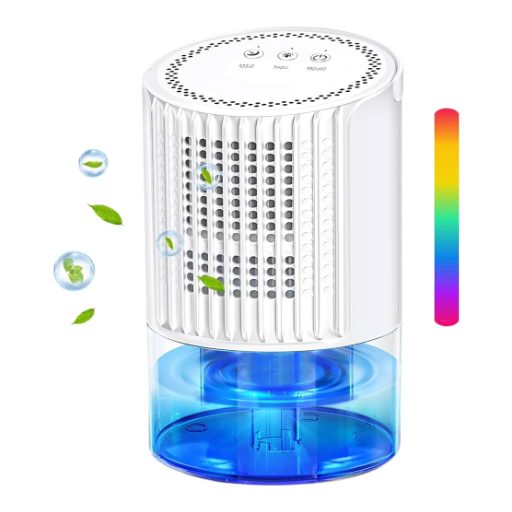
Understanding Humidity in Bathrooms
The use of hot water for bathing and showering increases the humidity level in a bathroom. Vapor from water increases the humidity in a closed space, resulting in condensation forming on windows, mirrors, and walls. This excess moisture encourages the growth of mold and mildew over time, which can damage surfaces and pose serious health risks like allergies and respiratory issues.
Space-type dehumidifiers assist in curbing and balancing high moisture levels in bathrooms. These devices remove moisture from air, which in turn curbs condensation and mold development. Improvement of air quality, along with prevention of damage to walls, ceilings, fixtures, and other parts of the bathroom, is possible through use of these modern dehumidifiers. Curbing the presence of humidity also enhances the lifespan of furnishings, cabinets, frames, and paints as moisture leads to warping and discoloration.
Taking care of a bathroom dehumidifier will also improve the comfort and hygiene. With the appropriate setting of humidity, the air is fresher and less odor is present compared to damp places. Modern dehumidifiers are small, consume less energy, and have features such as auto shut off or humidity sensors making the management of moisture in the bathroom incredibly easy. In all situations, whether you reside in a tropical region or only experience dampness occasionally, a dehumidifier is a worthy investment in maintaining a comfortable indoor environment.
How a Dehumidifier for the Bathroom Works
The operation of a dehumidifier for the bathroom entails extracting moisture from the air, reducing the humidity level in the area. Simple processes are applied by drawing air into the dehumidifier using a fan, passing it over a cooling coil, and cycling out drier air. Moisture condenses in the cooling coil and is either stored in a removable water tank or drained out through a hose, depending on the model.
To maintain a specific environment, many of these devices come with built-in sensors that monitor the relative humidity level of the space, automatically maintaining or adjusting operation to achieve set levels. Modern bathroom dehumidifiers are designed for easy use with features such as adjustable settings for humidity levels and automatic shut-off functions when the tank reaches capacity. These design features eliminate the need for constant adjustment, allowing for efficient reduction of humidity while increasing convenience.
A dehumidifier for the bathroom removes excess moisture, which controls the growth of mold and mildew. Both of these organisms thrive in a humid environment. The dehumidifier also limits condensation that forms on walls, windows, and mirrors. Such condensation over time can cause concerns for the building structure. For these reasons, the dehumidifier is practical for maintaining good health and comfort in the bathroom without the risk of damage caused by excess moisture.
Benefits of Using a Bathroom Dehumidifier
- Preventing the Growth of Mold and Mildew: Using a dehumidifier in the bathroom significantly keeps humidity levels low, which helps in preventing the growth of mold and mildew. Mold spores are likely to explode in damp environments, and continuous exposure to these can lead to health complications like allergic reactions or respiratory issues. By regulating moisture in the air, a dehumidifier promotes a cleaner and healthier environment in the bathroom.
- Prevention of Damage to The Structure: Moisture induced condensation due to overheating is a common observation in most bathrooms. This condensation, if left unchecked, can damage structural components like paint, wood, and even internal walls leading to more serious concerns like water damage. A dehumidifier is specifically designed to eliminate condensation by controlling humidity levels.
- Enhanced Comfort and Air Quality: A common complaint associated with high humidity is discomfort; this claim can be statistically proven to be true. The use of a dehumidifier dramatically improves air quality by lowering ambient humidity to help limit the growth and over population of dust mites and bacterial growth – making the bathroom a much friendlier place, especially for those with allergies or sensitivities.
It is very easy to maintain a comfortable and safe environment by investing in a bathroom dehumidifier. Additionally, it is equally ideal for tackling existing moisture issues or for longterm preservation of bathrooms. Maintaining and serving health is a priority for most homeowners and bathroom dehumidifiers are a must.
How to Choose the Best Small Dehumidifier for Your Bathroom?
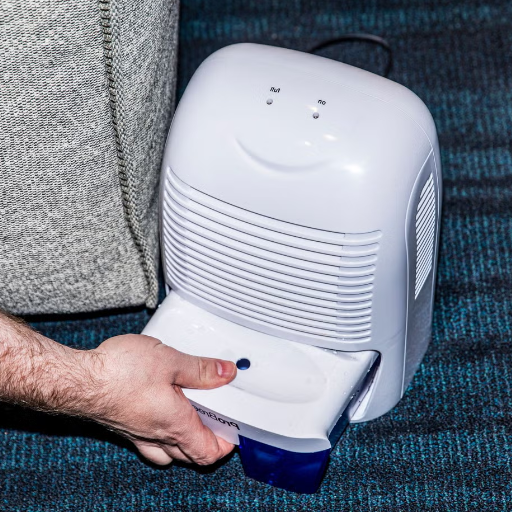
Key Features to Look for in a Dehumidifier
When you are looking for a small dehumidifier that is suited for your bathroom, some features are critical for performance and durability in the long run. Here are the factors you should focus on:
- Capacity and Efficiency: The dehumidifier’s capacity, typically measured in pints of water removed per day, determines its suitability for your bathroom size. For compact bathrooms, look for models with a capacity ranging from 10 to 20 pints per day, ensuring effective moisture reduction without overconsumption of power. Energy-efficient models with an Energy Star certification can further reduce electricity costs while maintaining high performance.
- Tank size and drainage options: For busy households that lack the time to work on the constant emptying of the tank, larger water tanks are most suitable. However, for those who do not want the device overflowing, models that have continuous drainage features like hose connections will work best. They also serve well in places that have a lot of moisture.
- Noise Levels: Units that work at or below 50 noise decibels tend to enhance the power used while maintaining a peaceful experience, making them propagate the best for bathrooms.
- Compact Design and Portability: Different types of bathrooms have a portion of the space set aside for shower stalls and sinks. Most bathroom dehumidifiers are made lightweight to ensure they can be placed conveniently on the corner shelf or even countertops.
- Auto Shut-Off and Hygrometer Integration: Accuracy measurement devices like hygrometers when fitted into more sophisticated models help create accurate programming regulated by specific values. This ability to monitor and regulate the moisture in the air through built-in hygrometers allows for customized strategies which can be set in advance.
- Maintenance and Ease of Cleaning: Regular maintenance sets policies on dehumidifiers with air filters that guarantee easy cleaning and tank washing. Frequent checkups aid in optimization and improving the durability of the device.
- Additional Features: Remote control through phones and other smart devices, a timer to set functional schedules, and inbuilt ionizers for air purification are some features mthat ore sophisticated dehumidifiers provide. Such functions are engineered to ensure modernization while boosting efficiency.
By ensuring that all of the features above are tailored into these devices, selected bathroom dehumidifiers will not only maintain necessary humidity values but also be optimal for day-to-day activities.
Understanding Water Tank Capacity and Drain Hose Options
When choosing a bathroom dehumidifier, the water tank capacity is always a major factor to evaluate. Water tank capacity defines the amount of moisture the unit can collect before needing to be emptied manually. Smaller tanks, which range from 1 – 2 liters, are best suited for compact spaces but require frequent emptying. On the other hand, larger tanks above 4 liters are more convenient because they require less maintenance and accommodate higher humidity levels. Ideally, the water tank capacity should match the room size and the moisture levels expected in the space.
Alternatively, many dehumidifiers come with the option of a drain hose, which allows for continuous drainage. This feature is extremely useful for areas of high humidity because it removes the task of tank monitoring and emptying. When a drain hose is connected to a designated outlet or drain, excess water is constantly being removed, and the unit can operate without interruption. This setup is extremely useful in bathrooms that have consistently high moisture levels, in many cases after showers or baths.
For best results, homeowners need to evaluate if a water tank or a drain hose configuration fits their lifestyle and bathroom habits best. While water tanks work for basic dehumidification, drain hoses work best for intensive and long-term use. Both systems, whether water tank or drain hose, perform optimally and last longer with proper setup, routine maintenance, and following the manufacturer’s guidelines.
Are Portable Dehumidifiers Effective for Small Bathrooms?
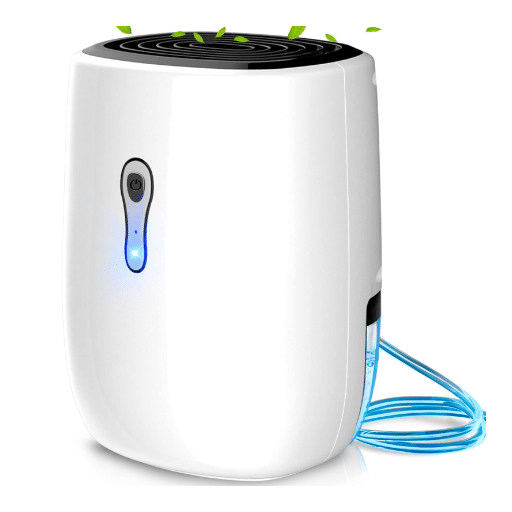
Advantages of Using a Portable Dehumidifier
- Enhanced Air Quality
The use of portable dehumidifiers aids in the reduction of excess moisture in the air, which inhibits the growth of mold, mildew, and dust mites. Keeping indoor humidity level within the range of 30-50%, allows for better management of allergens and respiratory infections.
- Compact and space-saving design
Portable dehumidifiers are ideal solutions for compact bathrooms because of their design specialization that promotes mobility and ease of use. Many lightweight and slim models can be stored and placed flexibly, therefore optimizing space.
- Energy Efficiency
Decreased electricity use without performance sacrifice defines the engineering of modern day portable dehumidifiers. For instance, Energy Star certified units are said to use between 15-30% less energy than noncertified ones which reduces utility payments in the long run.
- Quick and targeted moisture control
The portable versions can lower the humidity levels in small enclosed spaces within a couple of hours, eliminating steam after showering or bathing. Flexible dehumidifiers help minimize water-related damage by keeping the bathroom dry.
- User-friendly features
The convenience of easy-to-clean filters, adjustable humidity control, timers, and automatic shut-off features comes with many portable dehumidifiers. Such features allow home and property owners to set ideal conditions and require minimal effort in maintaining the bathroom environment.
Limitations of Small Dehumidifiers
As with most appliances, small dehumidifiers operate efficiently in particular situations. However, these devices do have some inherent disadvantages. To start with, their moisture extraction capability is lower than larger models. Most small units come within the range of 10 to 20 pints per day under optimal conditions. Moreover, some of the bathrooms or small spaces such as large humid areas, where these units are placed, may not provide the conversions needed. Also, small dehumidifiers can cover a smaller area, which makes them impractical for bigger rooms. These units are recommended for rooms within the space of 150-300 square feet.
Another drawback lies within noise levels, as small units tend to use less sophisticated dampening technology, which results in more operational noise during use. Also, regardless of being termed as “portable,” small units are bound to incur the most work casters due to their small frames, most in need of emptying all water from the used container, which can be problematic for high moisture areas. This may cause the small devices to go under low-efficiency positive maintenance cost scrutiny for filter replacement, cleaning, wherever needed.
Therefore, dehumidifiers are useful as long as their set limits are not breached. Before working with such devices, it would be extremely beneficial to define goals and accumulate as much data as possible. In the case of small appliances, while they do undertake to diminish the make requirement easier to maintain to a great extent without compromising quality, each possesses its limits, which should be bound to.
What are the Best Small Dehumidifiers for Bathrooms on the Market?
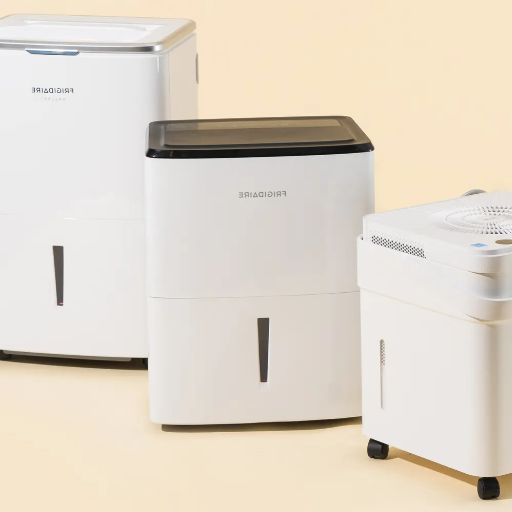
Top Picks for Best Small Dehumidifiers
While looking for the most effective small dehumidifiers for bathrooms, I examined many models that differ greatly in cost as well as performance, and functionality. Bathrooms are rather problematic spaces because of the high humidity, poor airflow, and the risk of mold contamination, which makes the selection of a suitable dehumidifier a meticulous process. After proper research and practical evaluation, I suggest using the most widely accepted options that offer the best value for money in terms of efficiency and dependability for bathroom use. For a detailed overview, visit wisdomdehumidifier.com for professional advice and tailored recommendations, which are dedicated just for you.
Pro Breeze Electric Mini Dehumidifier is among the best. This compact unit is designed for small rooms like bathrooms and has a remarkable moisture removal capability given its small size. It has also been designed to operate quietly, so it is ideal for daily use without interrupting people in the house. Most importantly, its energy efficiency is impressive, so you can use it frequently without spending a fortune on these units.’
Another model worth considering is the Eva-Dry E-333 Renewable Mini Dehumidifier. This gadget is unlike traditional electric models because it utilizes silica gel technology which does not require power, making it highly portable and eco-friendly. The device’s renewable feature allows it to be recharged and reused, which means less depreciation in value over time. These characteristics make it a great option for bathrooms that have high and low levels of humidity. For other reviews and comparisons of the same type of models, I suggest going to wisdomdehumidifier.com.
Budget-Friendly vs. Premium Options
While choosing between a budget dehumidifier and a premium one, considerations like performance efficiency, durability, and extra features should be evaluated before making the purchase. Inexpensive models often placate users by offering bare-bones functionality, providing basic moisture management at a lower initial expense. These are often portable because of their small size.
In contrast, premium options feature cutting-edge technology to deliver greater efficiency and durability. These units frequently offer additional features such as LCDs, built-in hygrometers, smart control humidity, energy-saving modes, and whisper-quiet operation. Streamlined for large spaces, premium units dismantle any limits placed on prolonged usage.
Recent data analysis also highlights the premium model’s low energy consumption cost per gallon of water removed, making them rent-able in the long-term despite a steeper upfront price. Drawing insights from user reviews shared across various platforms and expert analysis, premium dehumidifiers offer far less hassle for households and businesses seeking dependable moisture control solutions.
How to Maintain Your Bathroom Dehumidifier?
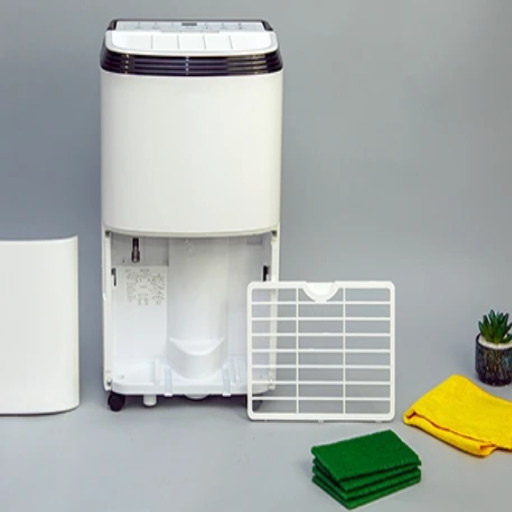
Regular Cleaning and Maintenance Tips
In order to achieve the best efficiency from your bathroom dehumidifier, as well as increase its lifespan, regular cleaning and maintenance are critical practices. First, routinely remove the water collection tank to eliminate the risk of overflowing, mold, or bacterial growth. If your model has filters, clean or change the filters to comply with the manufacturer’s recommendations, which is usually once every month or two to sustain airflow and filtration.
Moreover, check the intake and outtake vents for dust or dirt obstructions. A gentle brush or vacuum can help get rid of those areas when necessary. For units that offer continuous drainage, inspect and clean the drainage hose from time to time so clogs and mineral build-up don’t occur.
Damp cloth maintenance is essential too, as wiping the exterior of the dehumidifier gets rid of dust and grime. Once a year, consider doing a more thorough external and internal cleaning If access to internal parts requires guides from the user manual, it may be stepwise done professionally. Following these practices aids in making sure your bathroom dehumidifiers are dependable and will enhance your quality of life for years to come.
Ensuring Optimal Humidity Levels
Not maintaining optimal humidity levels and their associated risks, such as moisture-related risks, deterioration of air quality, and even health concerns, are of major concern. If the number is lower than thirty, the air is too dry, causing skin irritation, respiratory trouble, and damage to wooden structures. On the other hand, exceeding fifty percent creates an ideal setting for mold and other harmful microbial growth, hence, deteriorating one’s health and structures.
With enhancements in technology, controlling humidity levels using sophisticated dehumidifiers became much simpler. The appliances are now equipped with digital humidistats and automatic systems aimed at improving user experience through minimal intervention. Additional smart home integrations provide real-time monitoring empowering users to consistently manage their environment. For homes still using obsolete appliances, five years is estimated to increase maintenance costs by thirty-two percent.
Mitigating risks and safeguarding self from possible damages through moisture can be achieved by employing a data driven approach to regulated tools. In the end, these measures work hand in hand to elevate comfort levels within the controlled environment.
Troubleshooting Common Issues
Competent diagnosis and repair of a humidity control system problem involves a detailed, goal-oriented breakdown. This includes identifying the cause of efficient system performance, monitoring set points and level sensors, capturing data, and controlling system processes. Some common problems include sensor problems, lack of system response, constant anomalies in humidity monitoring, control system problems, or lack of sensor calibration.
Inaccurate measurements occurring as a result of a faulty sensor device tend to produce no results on opening. Proper corrective actions tend to be verified by appropriate stepwise procedures. Such is calibration. Failing to meet a requisite accomplishes precision criteria and demolishes trust in a long-term warranty base. Corrective measures include operating devices as prescribed in in-house documents, repairing them through attending to merits, or attending to damages that merit repair. For omission gaps, repair using collapse guarantees, disproven assumptions, or explain the removed arrogance.
Along with these methods, users should review the latest industry standards or proprietary manuals for the system to stay up to date with pertinent technological and best practice refinement strategies for humidity control systems. Homeowners and facility managers are able to sustain optimal performance and reduce chronic issues with the combination of updated resources, a systematic troubleshooting approach, and proper maintenance.
References
-
Further Investigation Of Energy And Performance Impacts Of Whole-House Dehumidifier Duct Configurations – A study discussing the efficiency and performance of small dehumidifiers.
-
Energy-Efficient Management of Mechanical Ventilation and Relative Humidity in Hot-Humid Climates – Research on energy-efficient dehumidification and ventilation strategies.
-
Energy-Efficient Management of Mechanical Ventilation and Relative Humidity in Hot-Humid Climates – Another detailed analysis of dehumidification in humid climates.
Frequently Asked Questions (FAQ)
Q: What is the best small dehumidifier for a bathroom?
A: The best small dehumidifier for a bathroom often depends on your specific needs, but a portable small dehumidifier designed for bathrooms is ideal. Look for features like auto shut-off and energy efficiency for optimal performance.
Q: Can I use a dehumidifier in a basement bathroom?
A: Yes, you can use a dehumidifier for basement in a bathroom, but ensure it is appropriately sized for the smaller space to avoid excessive drying and energy consumption.
Q: How many square feet should a small dehumidifier cover for a bathroom?
A: A small dehumidifier for a bathroom should generally cover around 150-300 sq ft. Always check the manufacturer’s specifications to ensure proper coverage for your space.
Q: What features should I look for in a dehumidifier with a pump for a bathroom?
A: For a bathroom, a dehumidifier with pump is not typically necessary unless you have specific drainage needs. Look for features like quiet operation, energy efficiency, and an auto shut-off function for convenience.
Q: Are there Energy Star dehumidifiers suitable for bathrooms?
A: Yes, there are Energy Star dehumidifiers that are suitable for bathrooms. These models are designed to be energy-efficient, helping to reduce electricity usage while effectively removing excess moisture.
Q: Is a desiccant dehumidifier a good choice for a bathroom?
A: A desiccant dehumidifier can be a good choice for a bathroom, especially in colder climates, as they perform well in lower temperatures and are generally quieter than compressor-based models.
Q: How can a quiet dehumidifier for the home improve air quality in my bathroom?
A: A quiet dehumidifier for the home can improve air quality in your bathroom by reducing excess moisture, which helps prevent mold and mildew growth. This contributes to a healthier and more comfortable environment.
Q: What is the benefit of having a dehumidifier with sleep mode in a bedroom or bathroom?
A: A dehumidifier with sleep mode is beneficial in both bedrooms and bathrooms as it operates quietly, allowing for a peaceful environment while still effectively managing humidity levels during nighttime hours.
Q: How does an auto shut-off small dehumidifier work in a bathroom?
A: An auto shut off small dehumidifier in a bathroom will automatically turn off when the water tank is full, preventing overflow and ensuring continuous, hassle-free operation without constant monitoring.
Q: Can I use an air purifier together with a small dehumidifier for a room in my bathroom?
A: Yes, using an air purifier together with a small dehumidifier for a room in your bathroom can enhance air quality by removing pollutants and controlling humidity levels, providing a cleaner, fresher atmosphere.

